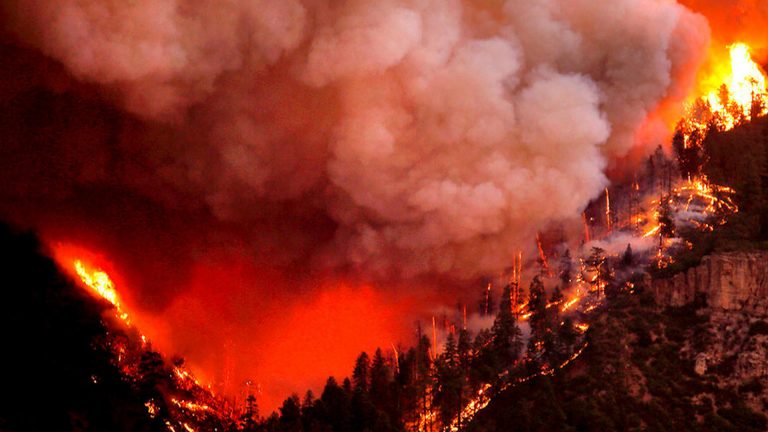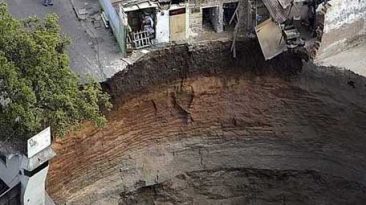You and your family decide to take a camping trip in the great outdoors. You’re relaxing in your tent, when suddenly, you smell smoke.
You assume the kids are making s’mores, but they’re fast asleep. Which means, the smoke you’re smelling is coming from the surrounding, burning forest. You’re in the middle of a forest fire.
You might be camping somewhere in the Western United States, which is where wildfires are most common. Although they can occur anywhere, with over 50,000 happening worldwide in 2019.
As big, uncontrolled infernos that catch quickly and tear through wild landscapes, 90% of forest fires are started either purposely or accidentally by humans. But what causes these fires in the first place?
Wildfires occur when a heat source comes into contact with fuel, like a match igniting dry leaves, or lightning striking a tree. And under extreme conditions, they can reach flame heights of 50 meters (164 feet) or more and temperatures exceeding 1200 degrees Celsius, or 2,192 degrees Fahrenheit.
These fires are extremely deadly- killing roughly 15,000 people in the US from chronic smoke inhalation every year. So what should you do if you’re caught in a raging blaze?
Pack up the expensive camping gear you spent two weeks’ pay on and make a run for it? Soak yourself down to avoid catching fire? Get naked and make a break for it?
Well, there’s no reason to get naked unless you’re wearing synthetics, because synthetics will burn very quickly. But there are other critical steps you should follow to safely survive a forest fire.
Step 1: Remain Calm
It’s important to stay calm. Don’t panic and start running, thinking you’ll beat the fire, because you won’t. Fires travel at extremely high speeds, making an on foot escape nearly impossible.
And the worst thing you can do is use up your limited oxygen with shallow, panicked breathing. So, it’s time to take a deep breath and prepare for what’s to come.
STEP 2: Protect Yourself
Cover your airways. Otherwise, you’re running the risk of severe smoke inhalation that may prove fatal. Use whatever clothing you have to cover your mouth and nose. And if you can’t move any further, look for non-flammable, safe places to hide under, such as large boulders or downed logs.
STEP 3: Assess Your Location
Scan the nearby trees and try to find anything of a hardwood variety to shelter near. They’re more difficult to ignite and burn slower.
Conifers are not your friends, today. They burn extremely fast. Remember, forest fires seek oxygen and travel quicker uphill rather than downhill. So make your way to the bottom of any hill, if possible. And if the area is clear of vegetation, even better.
STEP 4: Find Cover
Next, find a ditch. If you can’t find one close by, you might want to start digging in an open space with soft ground. Make sure to cover yourself with whatever you have available. Clothing, blankets or soil are your best options.
Or perhaps cover will be provided for you, like it was for California wildfire survivor Nicole Jolly, who found herself trapped in a car engulfed in flames. She jumped out of her vehicle through smoke and ash and was lucky enough to make it to a nearby fire truck, where they helped her into the truck and put a fire blanket over the windows to wait out the flames.
STEP 5: If Possible, Call for Help
Let the authorities know about the fire and your last known location. That way, they have a better chance of rescuing you in time from a pinpointed search area.
So, if you ever find yourself in a forest fire, remember to stay calm, cover your mouth and nose, assess your area, make a plan, and call for help. And hopefully, someone will come to assist you through the hellish conditions.
Of course, if more people had listened to Smokey the Bear, you probably wouldn’t be in this situation to begin with. But speaking of bears, if you should happen to encounter a less than friendly one, check out How to Survive a bear attack and know ahead of time how to stay alive.
Sources
- “Wildfires”. National Geographic.
- “What It Feels Like To Lie Face Down And Let A Wildfire Burn Over You”. Mockenhaupt, Brian. 2014. The Atlantic.
- “‘If You’re Going To Die, Die Fighting.’ “. Amir Vera, CNN. 2020. CNN.
- “Facts + Statistics: Wildfires | III”. 2020. iii.org.
- “US Wildfire Smoke Deaths Could Double By 2100”. 2020. phys.org.


















